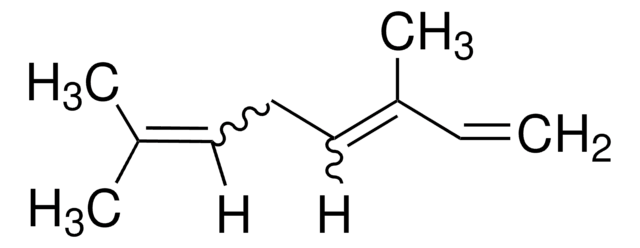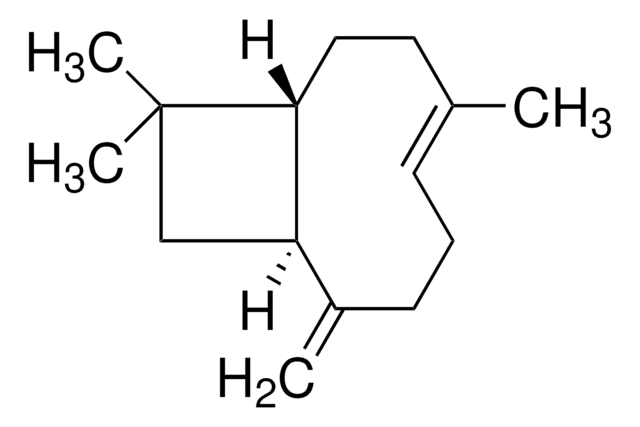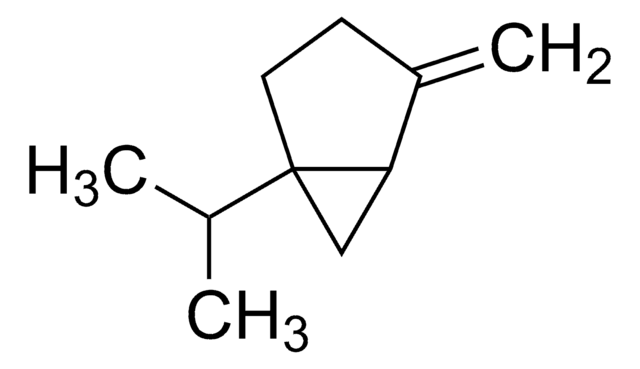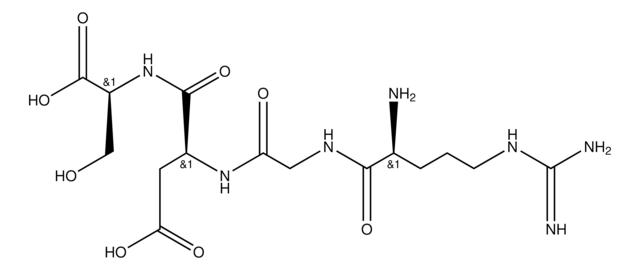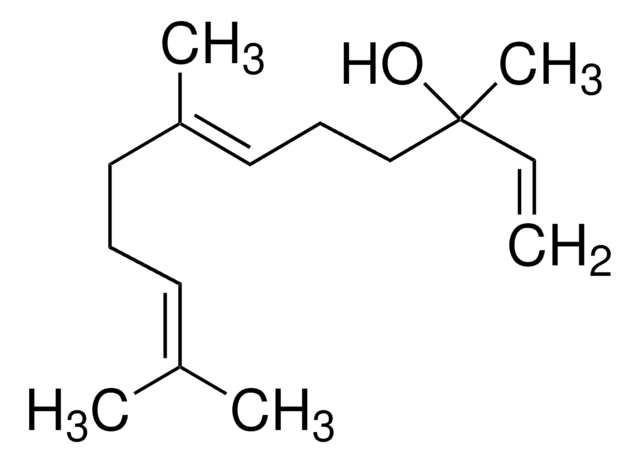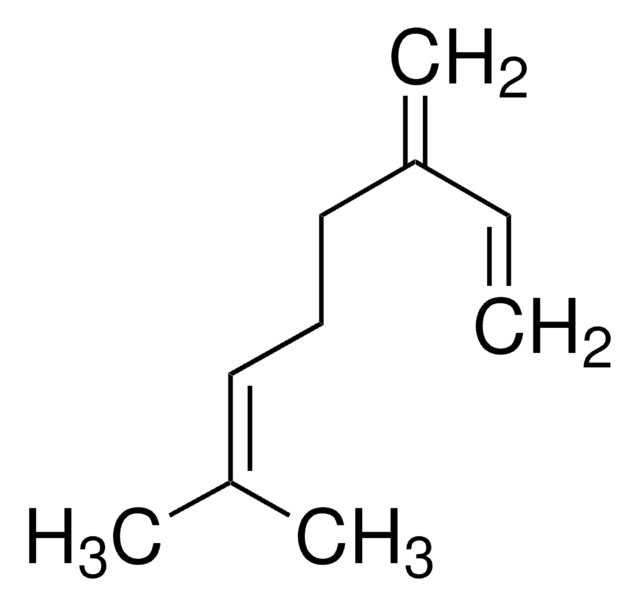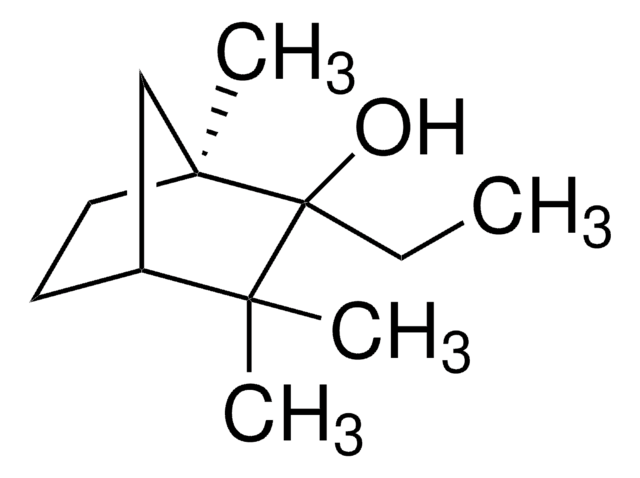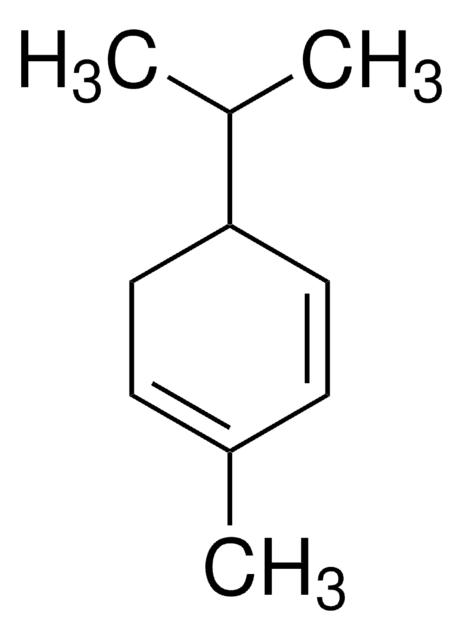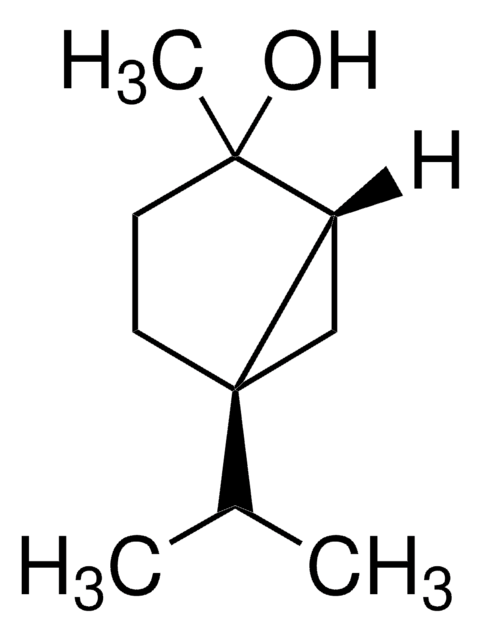W353901
Ocimene
mixture of isomers, stabilized, ≥90%
Sinónimos:
3,7-Dimethyl-1,3,6-octatrien
About This Item
Productos recomendados
origen biológico
synthetic
Nivel de calidad
Agency
meets purity specifications of JECFA
cumplimiento norm.
FDA 21 CFR 172.515
Ensayo
≥90%
contiene
BHT as stabilizer
índice de refracción
n20/D 1.485
bp
65-66 °C/13 mmHg
densidad
0.818 g/mL at 20 °C (lit.)
aplicaciones
flavors and fragrances
Documentación
see Safety & Documentation for available documents
Organoléptico
green; woody; tropical
cadena SMILES
[H]C(CC([H])=C(C)C=C)=C(C)C
InChI
1S/C10H16/c1-5-10(4)8-6-7-9(2)3/h5,7-8H,1,6H2,2-4H3
Clave InChI
IHPKGUQCSIINRJ-UHFFFAOYSA-N
¿Está buscando productos similares? Visita Guía de comparación de productos
Descripción general
Aplicación
- Volatile metabolomics and chemometric study provide insight into the formation of the characteristic cultivar aroma of Hemerocallis.: This study uses volatile metabolomics and chemometrics to explore the aroma formation in Hemerocallis, identifying significant volatile compounds including ocimene. The findings provide a deeper understanding of the biochemical pathways influencing aroma in plant cultivars (Zhou et al., 2023).
- A taste of sweet pepper: Volatile and non-volatile chemical composition of fresh sweet pepper (Capsicum annuum) in relation to sensory evaluation of taste.: Investigating the chemical composition of sweet peppers, this study identifies ocimene among the key volatiles contributing to flavor profiles, correlating chemical data with sensory evaluations to enhance understanding of taste perception in horticultural products (Eggink et al., 2012).
Cláusula de descargo de responsabilidad
Palabra de señalización
Danger
Frases de peligro
Consejos de prudencia
Clasificaciones de peligro
Aquatic Acute 1 - Aquatic Chronic 2 - Asp. Tox. 1 - Flam. Liq. 3 - Self-heat. 2 - Skin Irrit. 2
Código de clase de almacenamiento
4.2 - Pyrophoric and self-heating hazardous materials
Clase de riesgo para el agua (WGK)
WGK 3
Punto de inflamabilidad (°F)
132.8 °F - closed cup
Punto de inflamabilidad (°C)
56 °C - closed cup
Equipo de protección personal
Eyeshields, Faceshields, Gloves, type ABEK (EN14387) respirator filter
Elija entre una de las versiones más recientes:
¿Ya tiene este producto?
Encuentre la documentación para los productos que ha comprado recientemente en la Biblioteca de documentos.
Los clientes también vieron
Nuestro equipo de científicos tiene experiencia en todas las áreas de investigación: Ciencias de la vida, Ciencia de los materiales, Síntesis química, Cromatografía, Analítica y muchas otras.
Póngase en contacto con el Servicio técnico